The world is near its carrying capacity. A robust plan to save us and the world.
India is bringing the population control bill, but its no way going to save us from the apocalypse.
To understand the intensity of danger, let us understand the population growth curves.
Changes in Population Size:
A population will increase in size with every birth and it will decrease in size with every death.
Change in population Size = Births (B) - Deaths(D)
Mathematical notation:

Where N represents the population size, t represents time and ΔN is the change in population size and Δt is the time interval.
rΔt is per capita change in population size
If, for example, a population of 1,000 individuals increases by 15 individuals per year, then per capita change in population size is 15/1000 or 0.015.
If we make the change at each instant in time, the formula changes to:

r represents the per capita change in population size that occurs at each instant in time.
Exponential Growth:
When the population has abundant food and resources and are free to reproduce, they show exponential growth.
It results in a J-shaped growth curve.
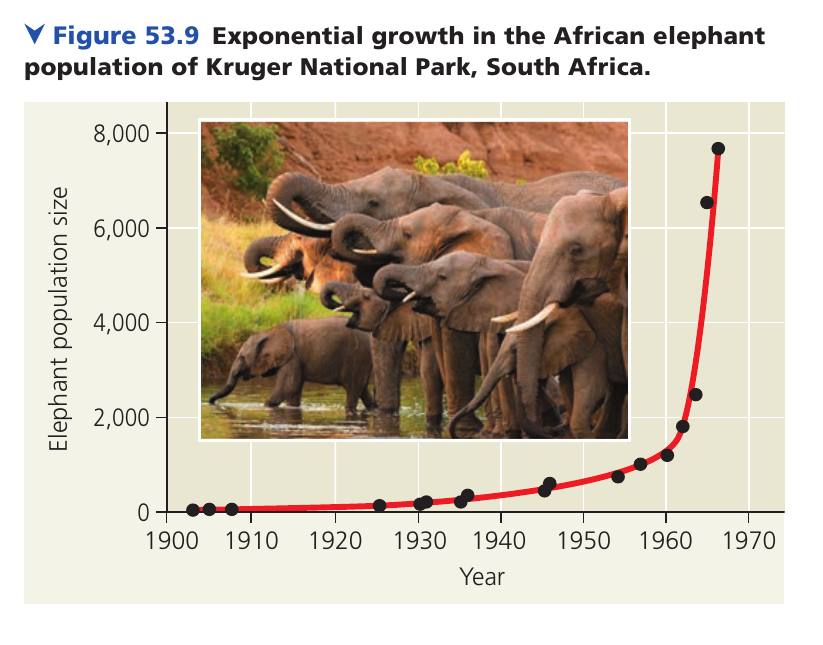
Although the per capita rate of the population is constant, more new individuals are added per unit of time when the population is large than when it is small.
Logistic Growth:
The exponential growth model assumes that resources remain abundant, which is rarely the case in the real world.
When the size of the population increase, each individual will get fewer resources.
Carrying capacity, symbolized by K, as the maximum population size that a particular environment can sustain.
Energy, shelter, predators, nutrient availability, negative externalities like pollution, climate change, all these are limiting factors that determine carrying capacity.
In this model, the per capita rate of population growth approaches zero as the population size nears the carrying capacity (K).
When N equals K, the population stops growing.
The logistic model produces an S-shaped growth curve.
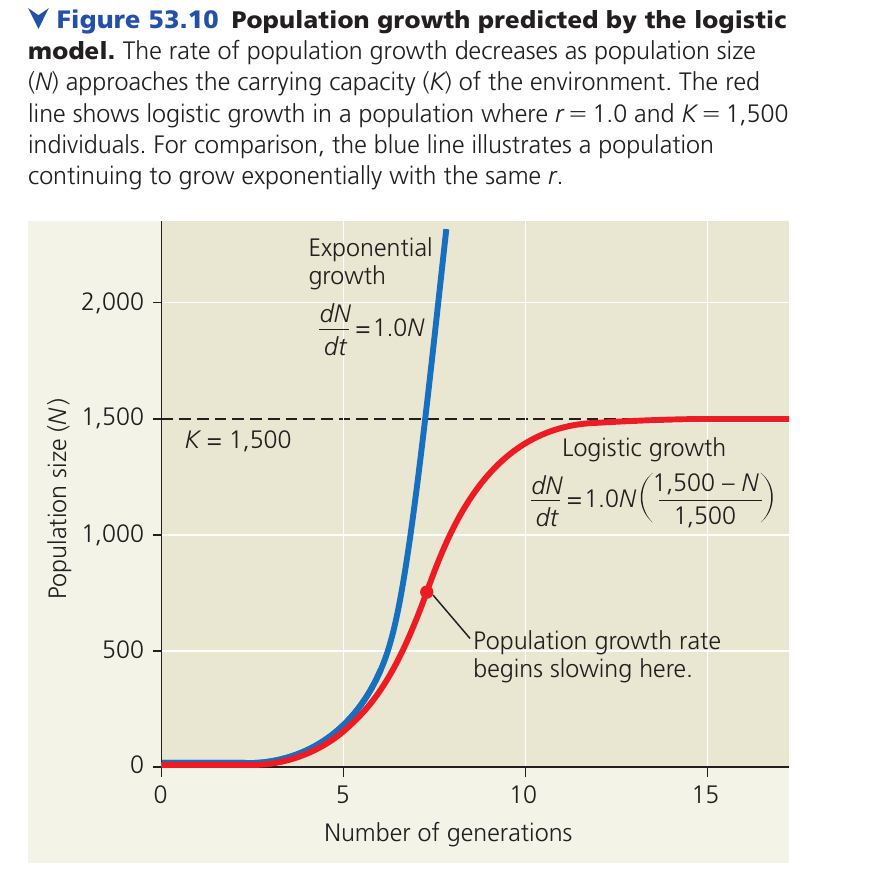
You can check the explanation here, why its S-shaped growth.
Bacteria and Competition: How it’s similar to human? and Why we should have family planning?
Why the population growth rate decreases as N approaches K?
It's because, the birth rate decreases, the death rate increases or both.
Human Population Growth:
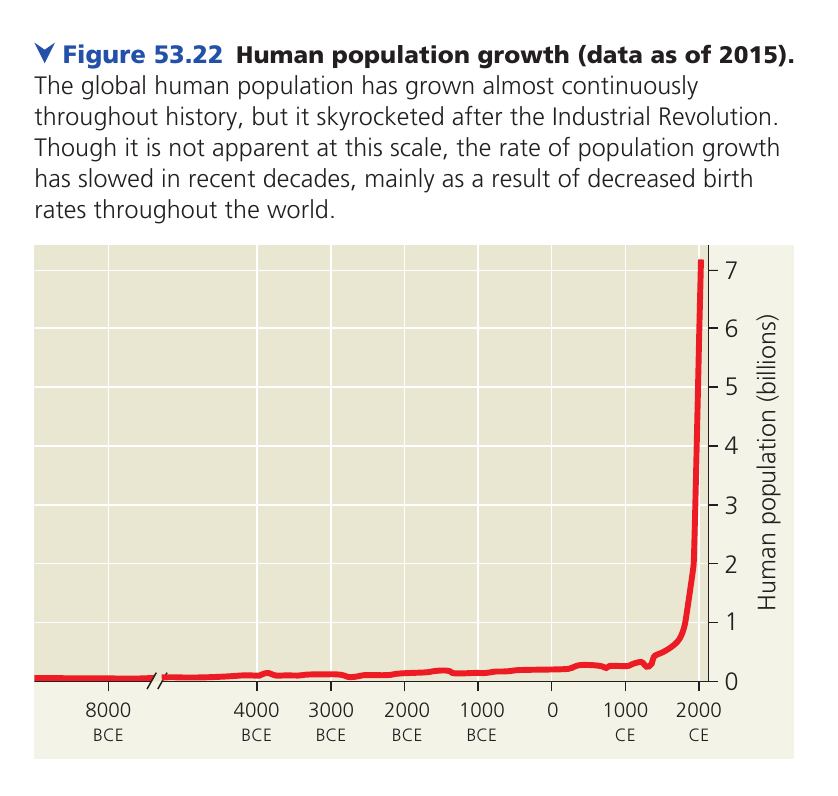
About carrying capacity:
Carrying capacity estimates is 13.4 billion people.
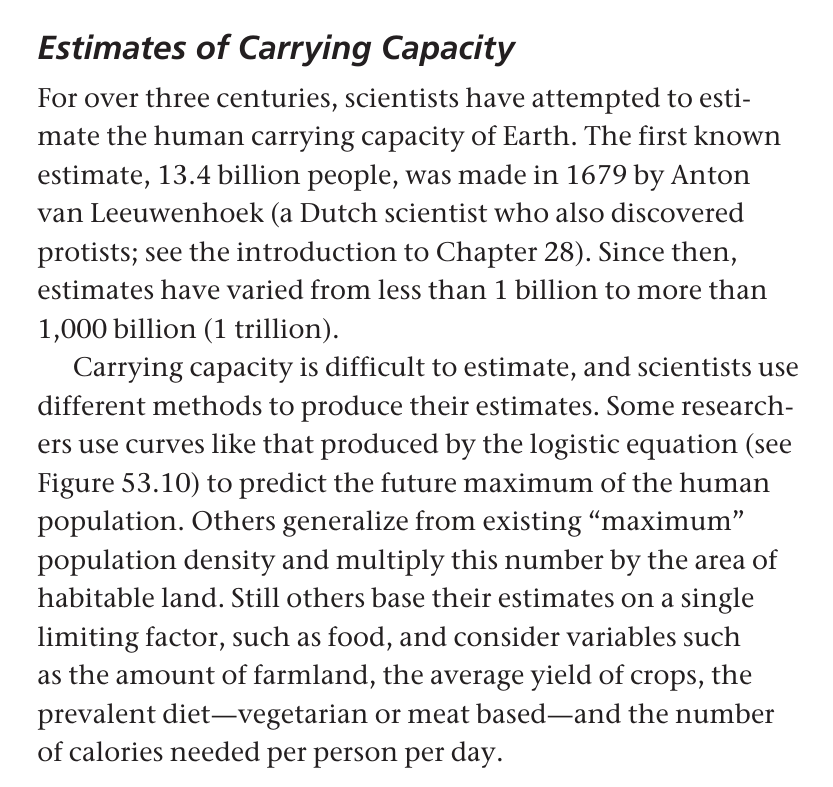
The human population is no longer growing exponentially but is still increasing rapidly and will reach its carrying capacity.
The world's population is expected to increase by 2 billion persons in the next 30 years, from 7.7 billion currently to 9.7 billion in 2050, according to a new United Nations report.
We are on the verge of reaching carrying capacity, which means children and grandchildren of millennials and grandchildren of boomers will face a high rate of death rates.
The ways in which deaths will happen should scare us, it can be because of lack of food as we are losing our habitats, asthmatic attacks and death due to pollution, and floods created due to climate change with economic tension and war between countries.
Future of Generation Z and millennials
The only way to stop reaching carrying capacity is to stop population growth completely. Just a decrease in growth rate which still adds a large number of new individuals due to large population size is not going to help.
Even if the population increase is 1.1 percent per year, every new year more people are added than the previous year.

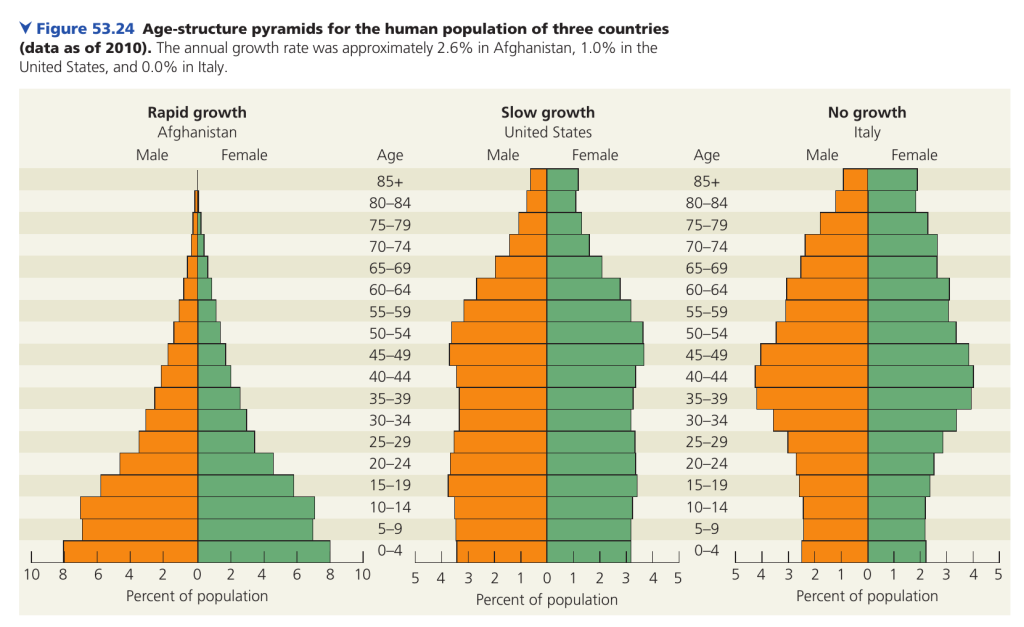
To stop population growth, a couple should have one child instead of two.
The plan:
Provide 1 lakh rupees to parents who undergo family planning sterilization operation after one child. If the first child is a girl, give parents additional 1 lakh rupees i.e 2 lakhs. Give 30,000 rupees who undergo sterilization after two children.
And this is not enough, one has to bring family planning worker team for execution. Provide huge incentives to them like 5 to 10 thousand rupees per operation, for convincing parents and bringing them to hospitals for sterilization.
Train the family planning worker, give them printed copies in all languages explaining the population growth curve with the same quality that of Cambell's biology book, as ask them to explain it to parents and create awareness.
Large incentives like 1 lakh will get enough media coverage and will create enough awareness about population growth.
And family planning worker will share responsibility and responsibility is not left with parent alone who can be uninformed. The process will be done with more ease and order.
The one-child policy in China has led to female foeticide that screwed the sex ratio. But this incentive model will not lead these unintended consequences because parents will undergo sterilization not by force but with self-awareness after they are educated from family planning workers and incentives are also higher for one girl child.
Saving, Saving and Saving:
One may ask from where money will come?
By taxes, if taxes collected from transaction costs are insufficient print more money and pay them.
Children are economically unviable for 20 years, i.e. they don't contribute to any economic growth until they are about 20 years. In India with such unemployment rates, they can be economically unviable for 30 to 40 years.
Imagine how much saving one will have when parents have one child, and there is a decrease in millions of children from the population.
Imagine other benefits like more parental care, an increase in living standards, a decrease in negative externalities that they would have contributed.
Yes, you can also provide more benefits as mentioned in the population control bill.
Entrepreneurs and politicians, please don't give us false hope and don't sell us fictional and untruthful "all is well" stories to sell your products or win the election, tell people real scary stories, that's how we can save us and the world.
Dear ignorant boomer and newly married millennials, the future of your children and grandchildren are in your hand.
The plan does require effective and well-planned execution and scientists of shivarthu (https://shivarthu.reaudito.com) can do that by identifying problems of execution and solving it.
Is carrying capacity increasing with technological improvement?
This is the population pyramid of India with 2019 data.
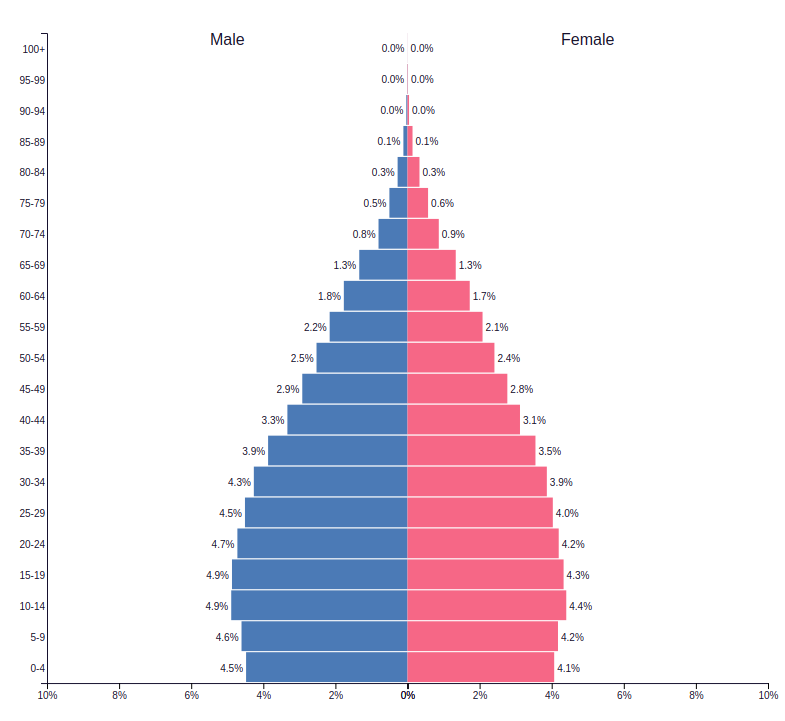
In India, people most likely to produce children (Age 20-34) is about 13.5%, but the kid population share (Age 0-19) is 18.9%. Still, there is a substantial increase in population that the country can't afford.
Technological improvement that will increase carrying capacity is a myth. Yes, food production has increased exponentially but at the expense of negative externalities. https://www.un.org/sustainabledevelopment/blog/2019/05/nature-decline-unprecedented-report/
You can't live in toxic air and water with floods, cyclones created due to climate change. Do we want our life without plants and animals, eating superfood like yeast?
Also, we have sky-scraping income inequality, as a result, the world is not the same for everyone. At the present state, we can find slums in every locality of India with miserable living standards where kids play in the dirty water of drains and potholes. More the number of children, less the parental care. With population increase and growing wealth inequality, conditions will get more miserable. High-income families can escape the impact, but not for a longer time.
Now let's analyze some of the conditions of children's birth and its impact on the population.
Conditions are based on probabilities values of producing one child, two children, three children, etc. for a population.
Condition 1:
The probability of producing one child, P(One child) is 0.5, and the probability of producing two children, P(Two children) is also 0.5.
It means half of the population will produce one child and another half will produce two children.
Then, there will be a 25% decrease in birth rates, which is a great idea.
Condition 2:
P(one child) = 0.1
P(Two children) = 0.7
P(Three children) = 0.2
Calculation: (0.2×1.5) + 0.7 + (0.1×0.5) = 1.05
It will cause a 5% increase, still a bad idea.
Condition 3:
P(one child) = 0.1
P(Two children) = 0.5
P(Three children) = 0.4
Calculation: (0.1×0.5) + 0.5 + (0.4×1.5) = 1.15
So its 15% increase, it's a miserable idea
Increasing the probability of three children will bring a very high increase in population.
Condition 4:
P(one child) = 0.2
P(Two children) = 0.4
P(Three children) = 0.2
P(Four children) = 0.2
Calculation: (0.2 × 0.5) + 0.4 + (0.2×1.5) + (0.2×2) = 1.2
It causes a 20% increase in population.
References:
Campbell's Biology Book
Comments
Post a Comment